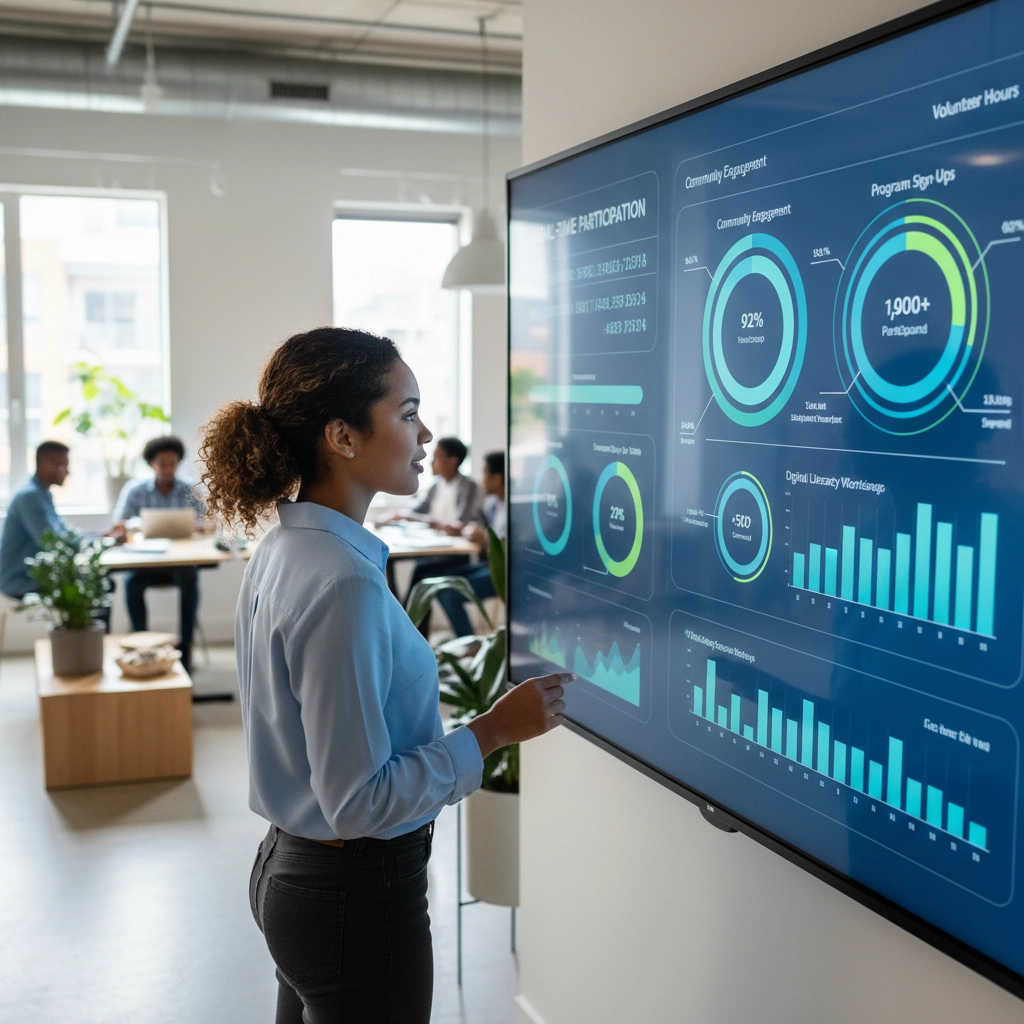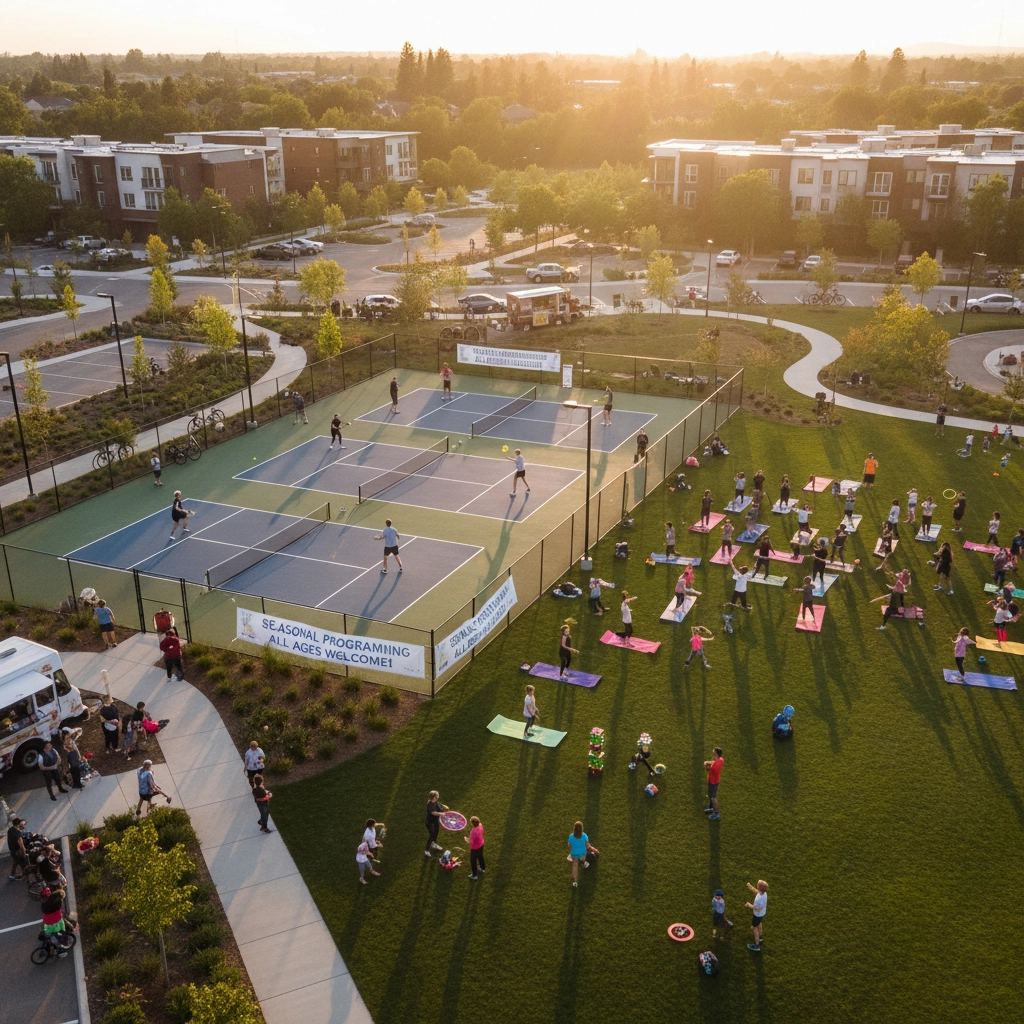Stop Losing Residents Over Boring Activities: 10 Data-Driven Recreation Programs That Actually Work
- luanneberk
- Sep 24
- 4 min read
Community managers everywhere are facing the same frustrating reality: residents are moving out because they're bored. Despite investing thousands in recreation programs, participation rates remain low, and complaints keep rolling in about "the same old activities."
But here's what's changed: smart communities are ditching the guesswork and using data to create programs that residents actually want. These data-driven approaches aren't just boosting participation: they're transforming entire communities into vibrant, engaging places people never want to leave.
1. AI-Powered Activity Personalization
Instead of planning activities based on hunches, progressive communities are using artificial intelligence to analyze resident behavior patterns and preferences. This system tracks participation history, demographic data, and even social interactions to suggest personalized activity recommendations.
For example, if data shows that working parents in your community consistently miss evening fitness classes but engage heavily with weekend family activities, the AI can recommend shifting fitness programming to early mornings or lunch hours while expanding family-friendly weekend options.

2. Real-Time Participation Analytics
Gone are the days of waiting until the end of the quarter to evaluate program success. Modern communities use real-time dashboards that track attendance, engagement levels, and participant feedback as it happens. This allows program coordinators to make immediate adjustments when they notice declining participation or emerging trends.
One community discovered through their analytics that their book club attendance dropped 40% during football season: so they pivoted to hosting "Touchdown & Tales" sessions where residents could watch games while discussing books during commercial breaks.
3. Seasonal Engagement Optimization
Data reveals fascinating patterns about when residents are most likely to try new activities. By analyzing historical participation data, communities can identify optimal timing for launching new programs and scaling successful ones.
Fall consistently shows the highest participation rates for fitness programs, while spring drives interest in outdoor activities and gardening clubs. Winter months are perfect for indoor creative workshops and social events. Smart communities use this seasonal data to plan their entire annual programming calendar.
4. Demographic-Driven Program Development
Rather than assuming what different age groups want, data-driven communities analyze actual participation by demographics to create targeted programming. This goes beyond basic age brackets to include factors like work schedules, family status, and lifestyle preferences.
For instance, data might reveal that young professionals in your community are highly interested in fitness but only attend classes that start after 7 PM or before 7 AM. Armed with this insight, you can create "Early Bird Bootcamp" or "After Work Warriors" programs that actually fit their schedules.

5. Technology-Enhanced Interactive Programs
Modern recreation isn't just about traditional activities: it's about integrating technology to create engaging experiences that resonate with today's residents. This includes everything from fitness apps that track community-wide challenges to virtual reality experiences for residents who can't participate in physically demanding activities.
Gaming tournaments, app-based scavenger hunts, and augmented reality fitness experiences are driving unprecedented engagement levels, especially among younger residents who previously showed little interest in community activities.
6. Health-Integrated Wellness Programs
The most successful communities are using wearable device data and health assessments to create personalized wellness programs. This isn't about accessing private medical information: it's about understanding general fitness levels and health goals to create appropriate programming.
Communities partnering with fitness tracking apps can create group challenges, monitor program effectiveness, and even identify residents who might benefit from additional wellness support. The data helps create programs that are both safe and appropriately challenging for participants.
7. Social Network Analysis for Activity Matching
By analyzing social connections within the community, recreation coordinators can identify natural friend groups and plan activities that bring compatible residents together. This data-driven approach to social programming has shown remarkable success in building lasting community connections.
The system might identify that residents who attend yoga classes often become friends with book club members, leading to the creation of "Mindful Readers" sessions that combine gentle movement with literary discussion.

8. Predictive Maintenance for Outdoor Programs
Weather data integration and seasonal analytics help communities proactively plan for program disruptions and alternatives. Instead of constantly canceling outdoor activities due to weather, smart communities use predictive data to create flexible programming with built-in backup options.
This includes having indoor alternatives ready, adjusting schedules based on weather forecasts, and even using historical weather patterns to optimize facility usage throughout the year.
9. Community Feedback Loop Systems
Data collection isn't just about numbers: it's about creating systematic feedback loops that capture resident sentiment and suggestions. Digital feedback systems, post-activity surveys, and social media monitoring create a comprehensive picture of program effectiveness.
The key is making feedback collection effortless for residents while ensuring the data is immediately actionable for program coordinators. QR codes for quick surveys, simple rating systems, and integrated feedback tools make this process seamless.
10. Cross-Program Engagement Analytics
The most sophisticated communities track how participation in one activity influences interest in others. This cross-pollination data reveals unexpected connections and helps create programming pathways that naturally lead residents from one activity to another.
For example, data might show that residents who attend cooking classes often join wine tasting events, leading to the creation of "Culinary Adventures" programming that combines both interests into a cohesive experience.
Making Data-Driven Programming Work for Your Community
The key to successful data-driven programming isn't having the most advanced technology: it's about starting with clear goals and gradually building your data collection and analysis capabilities. Begin with simple participation tracking, then add layers of sophistication as you identify what data provides the most actionable insights.
Remember that data should enhance, not replace, the human element of community programming. The most successful communities use data to inform their decisions while maintaining the personal touch that makes residents feel valued and heard.
The communities that are winning the retention battle aren't just offering more activities: they're offering smarter activities that are designed around actual resident needs and preferences. By embracing data-driven programming, you're not just improving participation rates; you're creating a community culture that naturally evolves to meet changing resident needs.
Ready to transform your community's recreation programming? Start by implementing just one or two of these data-driven approaches and watch as resident engagement: and retention: begins to soar. Visit our youth camps page to see how we're already putting these principles into action, or explore our blog for more community engagement strategies that actually work.

Comments